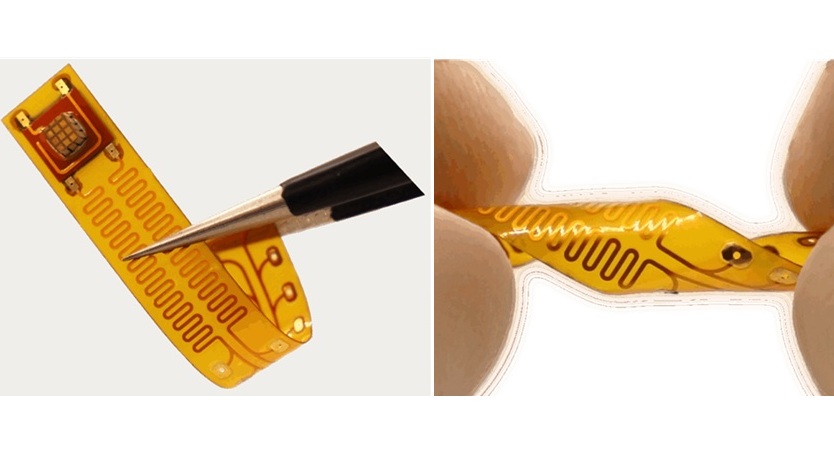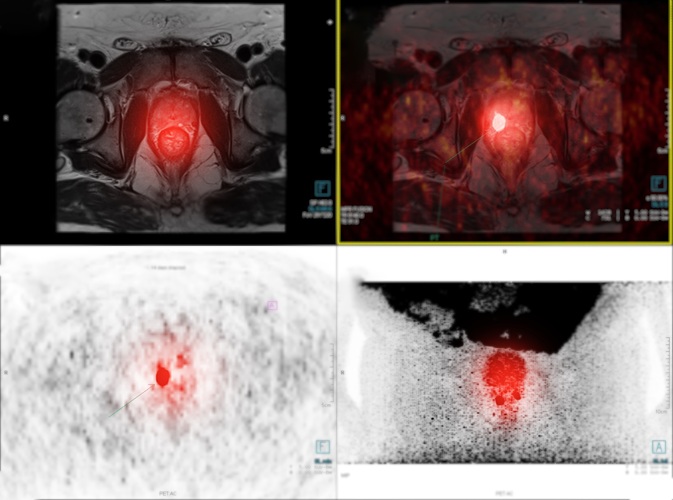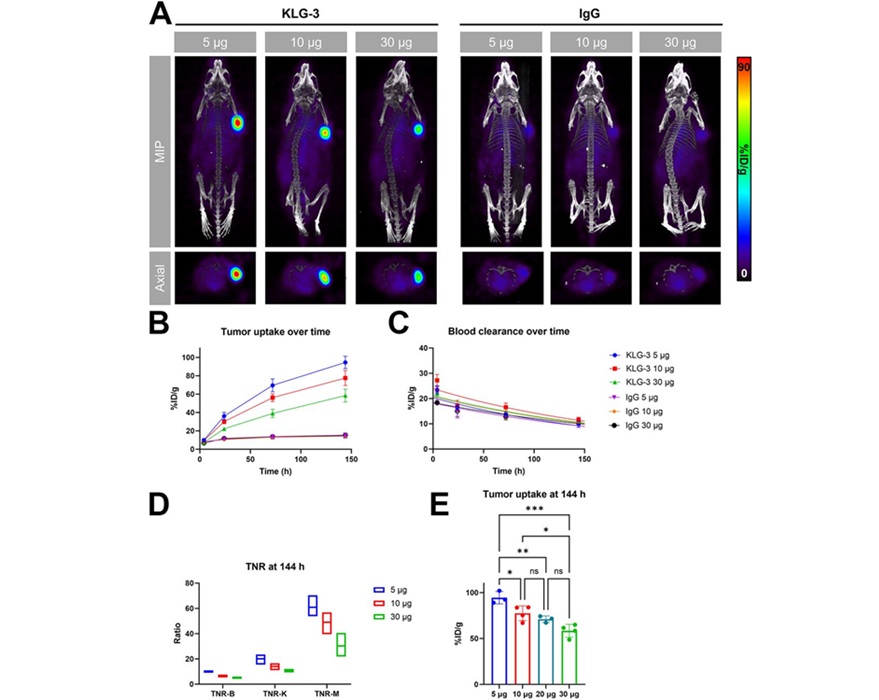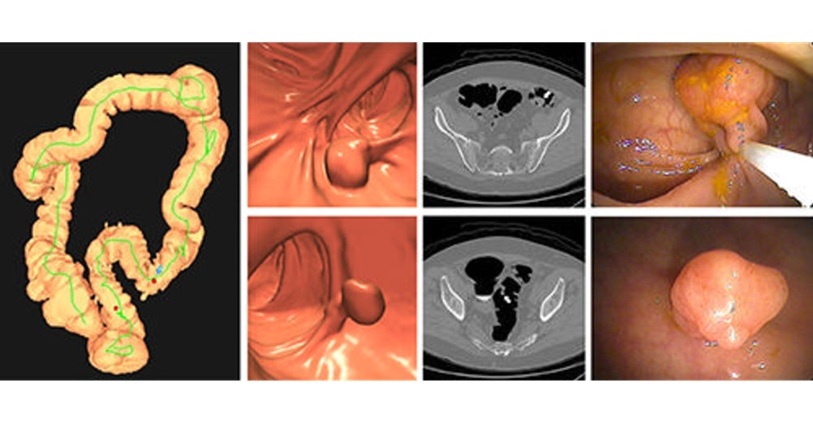AI System Detects Prostate Cancer During Routine CT Scans
|
By MedImaging International staff writers Posted on 15 Nov 2021 |

Image: CT slices of a patient with prostate cancer (a), and one without (b) (Photo courtesy of SVHM/ RMIT)
A new study describes an artificial intelligence (AI) based framework that can rapidly spot incidental prostate tumors during abdominal or pelvic scans.
Developed at RMIT University (RMIT; Melbourne, Australia) and St. Vincent's Hospital (SVHM; Melbourne, Australia), the new convolutional neural network (CNN) is designed for incidental computer aided detection (CADe) of clinically significant prostate cancer in patients undergoing a computerized tomography (CT) scan of the abdomen or pelvis for other reasons. The dataset used to develop the CNN consisted of 139 clinically significant prostate cancer patients and 432 controls.
The results showed that the proposed CNN pipeline achieved an area under the receiver operating characteristic curve (ROC-AUC) of 0.88 on CT, significantly higher than that of two radiologists (0.61 and 0.70) set on the same task. In addition, the results confirmed that the screening capabilities of CT-based pipelines, when combined with deep learning CNNs, are comparable to those of magnetic resonance imaging (MRI)-based diagnostic pipelines. The study was published in the November 2021 issue of Scientific Reports.
“Australia doesn’t have a screening program for prostate cancer, but armed with this technology, we hope to catch [such] cases early in patients who are scanned for other reasons,” said study co-author radiologist Mark Page, MD, of SVHM. “For example, emergency patients who have CT scans could be simultaneously screened for prostate cancer. If we can detect it earlier and refer them to specialist care faster, this could make a significant difference to their prognosis.”
In Australia, prostate cancer is responsible for approximately 12% of all male cancer deaths, as the slowly-growing tumors often go unnoticed for years. It is typically difficult to spot prostate cancer in CT images, and the radiation doses required make CT unsuitable as a screening modality. However, if men need to undergo an abdominal or pelvic scan for other reasons, CADe could help spot prostate cancer and let clinicians initiate early treatment.
Related Links:
RMIT University
St. Vincent's Hospital
Developed at RMIT University (RMIT; Melbourne, Australia) and St. Vincent's Hospital (SVHM; Melbourne, Australia), the new convolutional neural network (CNN) is designed for incidental computer aided detection (CADe) of clinically significant prostate cancer in patients undergoing a computerized tomography (CT) scan of the abdomen or pelvis for other reasons. The dataset used to develop the CNN consisted of 139 clinically significant prostate cancer patients and 432 controls.
The results showed that the proposed CNN pipeline achieved an area under the receiver operating characteristic curve (ROC-AUC) of 0.88 on CT, significantly higher than that of two radiologists (0.61 and 0.70) set on the same task. In addition, the results confirmed that the screening capabilities of CT-based pipelines, when combined with deep learning CNNs, are comparable to those of magnetic resonance imaging (MRI)-based diagnostic pipelines. The study was published in the November 2021 issue of Scientific Reports.
“Australia doesn’t have a screening program for prostate cancer, but armed with this technology, we hope to catch [such] cases early in patients who are scanned for other reasons,” said study co-author radiologist Mark Page, MD, of SVHM. “For example, emergency patients who have CT scans could be simultaneously screened for prostate cancer. If we can detect it earlier and refer them to specialist care faster, this could make a significant difference to their prognosis.”
In Australia, prostate cancer is responsible for approximately 12% of all male cancer deaths, as the slowly-growing tumors often go unnoticed for years. It is typically difficult to spot prostate cancer in CT images, and the radiation doses required make CT unsuitable as a screening modality. However, if men need to undergo an abdominal or pelvic scan for other reasons, CADe could help spot prostate cancer and let clinicians initiate early treatment.
Related Links:
RMIT University
St. Vincent's Hospital
Latest Radiography News
- AI Hybrid Strategy Improves Mammogram Interpretation
- AI Technology Predicts Personalized Five-Year Risk of Developing Breast Cancer
- RSNA AI Challenge Models Can Independently Interpret Mammograms
- New Technique Combines X-Ray Imaging and Radar for Safer Cancer Diagnosis
- New AI Tool Helps Doctors Read Chest X‑Rays Better
- Wearable X-Ray Imaging Detecting Fabric to Provide On-The-Go Diagnostic Scanning
- AI Helps Radiologists Spot More Lesions in Mammograms
- AI Detects Fatty Liver Disease from Chest X-Rays
- AI Detects Hidden Heart Disease in Existing CT Chest Scans
- Ultra-Lightweight AI Model Runs Without GPU to Break Barriers in Lung Cancer Diagnosis
- AI Radiology Tool Identifies Life-Threatening Conditions in Milliseconds

- Machine Learning Algorithm Identifies Cardiovascular Risk from Routine Bone Density Scans
- AI Improves Early Detection of Interval Breast Cancers
- World's Largest Class Single Crystal Diamond Radiation Detector Opens New Possibilities for Diagnostic Imaging
- AI-Powered Imaging Technique Shows Promise in Evaluating Patients for PCI
- Higher Chest X-Ray Usage Catches Lung Cancer Earlier and Improves Survival
Channels
MRI
view channel
AI-Assisted Model Enhances MRI Heart Scans
A cardiac MRI can reveal critical information about the heart’s function and any abnormalities, but traditional scans take 30 to 90 minutes and often suffer from poor image quality due to patient movement.... Read more
AI Model Outperforms Doctors at Identifying Patients Most At-Risk of Cardiac Arrest
Hypertrophic cardiomyopathy is one of the most common inherited heart conditions and a leading cause of sudden cardiac death in young individuals and athletes. While many patients live normal lives, some... Read moreUltrasound
view channel
Non-Invasive Ultrasound-Based Tool Accurately Detects Infant Meningitis
Meningitis, an inflammation of the membranes surrounding the brain and spinal cord, can be fatal in infants if not diagnosed and treated early. Even when treated, it may leave lasting damage, such as cognitive... Read more
Breakthrough Deep Learning Model Enhances Handheld 3D Medical Imaging
Ultrasound imaging is a vital diagnostic technique used to visualize internal organs and tissues in real time and to guide procedures such as biopsies and injections. When paired with photoacoustic imaging... Read moreNuclear Medicine
view channel
New Camera Sees Inside Human Body for Enhanced Scanning and Diagnosis
Nuclear medicine scans like single-photon emission computed tomography (SPECT) allow doctors to observe heart function, track blood flow, and detect hidden diseases. However, current detectors are either... Read more
Novel Bacteria-Specific PET Imaging Approach Detects Hard-To-Diagnose Lung Infections
Mycobacteroides abscessus is a rapidly growing mycobacteria that primarily affects immunocompromised patients and those with underlying lung diseases, such as cystic fibrosis or chronic obstructive pulmonary... Read moreGeneral/Advanced Imaging
view channel
Extending CT Imaging Detects Hidden Blood Clots in Stroke Patients
Strokes caused by blood clots or other mechanisms that obstruct blood flow in the brain account for about 85% of all strokes. Determining where a clot originates is crucial, since it guides safe and effective... Read more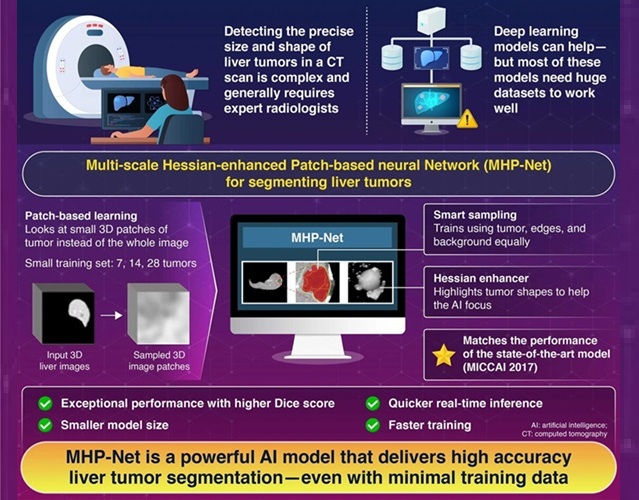
Groundbreaking AI Model Accurately Segments Liver Tumors from CT Scans
Liver cancer is the sixth most common cancer worldwide and a leading cause of cancer-related deaths. Accurate segmentation of liver tumors is critical for diagnosis and therapy, but manual methods by radiologists... Read more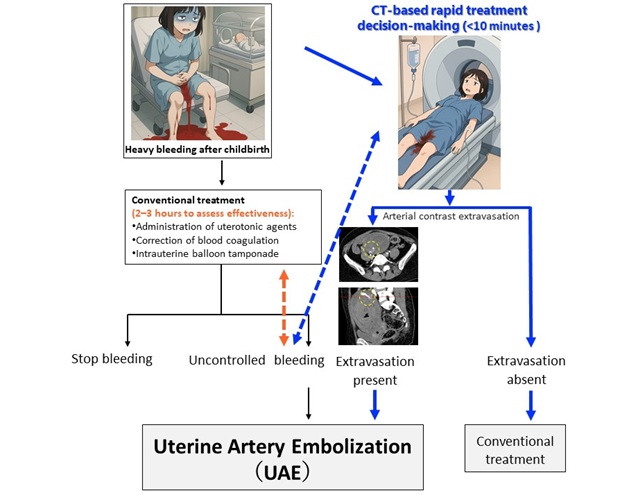
New CT-Based Indicator Helps Predict Life-Threatening Postpartum Bleeding Cases
Postpartum hemorrhage (PPH) is a leading cause of maternal death worldwide. While most cases can be controlled with medications and basic interventions, some become life-threatening and require invasive treatments.... Read moreImaging IT
view channel
New Google Cloud Medical Imaging Suite Makes Imaging Healthcare Data More Accessible
Medical imaging is a critical tool used to diagnose patients, and there are billions of medical images scanned globally each year. Imaging data accounts for about 90% of all healthcare data1 and, until... Read more
Global AI in Medical Diagnostics Market to Be Driven by Demand for Image Recognition in Radiology
The global artificial intelligence (AI) in medical diagnostics market is expanding with early disease detection being one of its key applications and image recognition becoming a compelling consumer proposition... Read moreIndustry News
view channel
GE HealthCare and NVIDIA Collaboration to Reimagine Diagnostic Imaging
GE HealthCare (Chicago, IL, USA) has entered into a collaboration with NVIDIA (Santa Clara, CA, USA), expanding the existing relationship between the two companies to focus on pioneering innovation in... Read more
Patient-Specific 3D-Printed Phantoms Transform CT Imaging
New research has highlighted how anatomically precise, patient-specific 3D-printed phantoms are proving to be scalable, cost-effective, and efficient tools in the development of new CT scan algorithms... Read more
Siemens and Sectra Collaborate on Enhancing Radiology Workflows
Siemens Healthineers (Forchheim, Germany) and Sectra (Linköping, Sweden) have entered into a collaboration aimed at enhancing radiologists' diagnostic capabilities and, in turn, improving patient care... Read more















